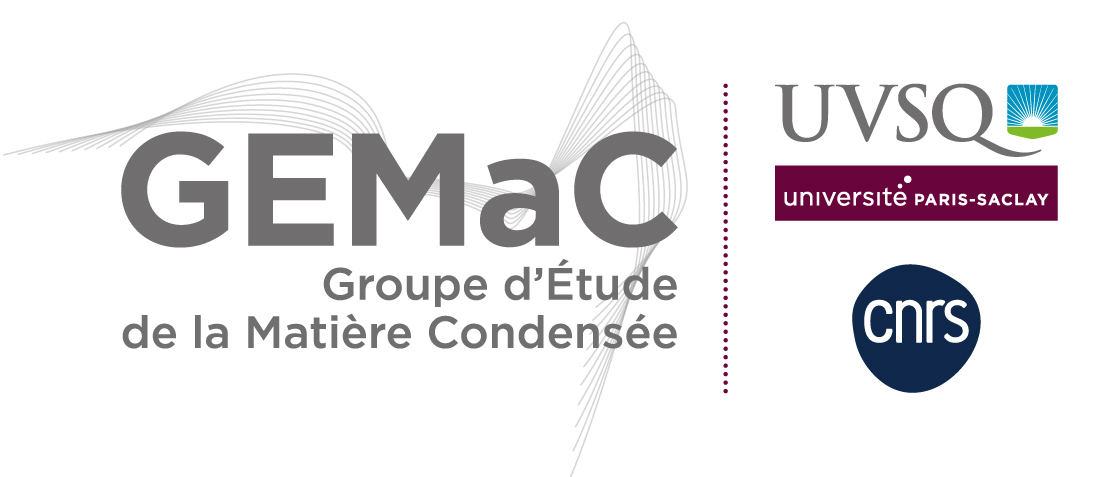Studies on the photophysical properties of colloidal nanostructures
1. CdSe/CdS nanocrystals (NCs)
For several years, we have been collaborating with the Parisian Quantum Dots team of the LPEM (ESPCI). This team has mastered the synthesis of CdSe/CdS NCs with a thick crystalline shell that can exceed 10 nm. Together with the LPEM team, we have shown the almost complete suppression of scintillation for these objects and the existence of a low-intensity emitting level, a "grey" state with a quantum efficiency close to 30% (the non-radiative recombinations correspond to recombinations by the Auger effect). Still in collaboration with ESPCI but also with theorists and M. Bayer's group in Dortmund, we have shown that these recombinations are thermally activated [1] and studied the spin dynamics of the trion [2]. Below 30 K, the Auger processes are suppressed and the fluorescence yield is close to 100%. Also at low temperature, we have shown the suppression of flicker [3] and examined in detail the coherence of the CdS-shell NCs emission by an original Fourier photon correlation spectroscopy method [4].
Recently, we continued to study the emission properties of NCs at low temperatures:
- Collaboration with M. Bayer’s team continued with the study of the spin dynamics of the negatively charged trion [1]. It made it possible to measure the Landé factor of the hole as well as to identify the spin relaxation process of the trion state.
- For several years, the team has been using an original photon correlation Fourier spectroscopy (PCFS) technique to characterize the dynamics of the NC emission wavelength jumps. After demonstrating total suppression of blinking at 4 K [3], we examined in detail the time coherence of the CdS shell NC emission. Permanently ionized at 4 K, they are characterized by reduced spectral diffustion at time scales greater than 250 ns [4].
2. Hybrid gold/NC colloidal nanoemitters
In collaboration with the Laboratoire Charles Fabry and the Laboratoire de Physique et d'Etude des Matériaux, we have developed and studied a new type of hybrid fluorescent emitters associating colloidal NCx coupled to plamonic nanoresonators. These are compact NCx aggregates of about 300 nm in diameter encapsulated in a silica shell (about 20 nm thick) and a gold shell (about 30 nm thick).
We have carried out an in-depth study of the complex optical properties of these superparticles (SPs) at room temperature or at cryogenic temperatures (4K). In the absence of a gold shell, the SPs exhibit high photostability, radiative quantum efficiency averaging more than 40% and a complete absence of flicker. Analysis of fluorescence spectra and time-resolved spectroscopy experiments show that these objects exhibit a non-radiative transfer between neighbouring NCx (FRET for Förster resonant energy transfer) which we have characterised in detail and which is consistent with the high compactness of the aggregate (SAXs measurements) [5].
The FRET phenomenon constitutes an incoherent dipolar interaction between NCx which reduces the coherent interactions sought in particular for superradiance. By adding a gold resonator (GSPs for golden supraparticles), the emission is accelerated and the FRET efficiency is simultaneously reduced by a factor of about 3 for GSPs with a total dimension of less than 300 nm [6]. The experimentally observed emission acceleration is in agreement with numerical simulations
In an approach that can be generalised to other structures consisting of a mesoscopic number of emitters and based on the study of the coherence of the emission, we have finally shown that the structure of the emission spectrum of these mesoscopic systems allows us to evaluate the number of active emitters in an individual GSP much more precisely than the measurement of its geometrical parameters by atomic force microscopy or electron microscopy [7].
[1]
C. Javaux et al., Nature Nanotechnology 8, 206 (2013)
[2]
F. Liu et al., Phys. Rev. B 88, 035302 (2013)
[3]
D. Canneson et al., Phys. Rev. B 89, 035303 (2014)
[4]
L. Biadala et al., Phys. Rev. B 91, 085416 (2015)
[5]
V. Blondot et al., New J. Phys. 22, 113026 (2020)
[6]
V.Blondot et al., arXiv:2207.03135 (2022)
[7]
A. Delteil et al., Phys. Rev. B. 106, 115302 (2022)





